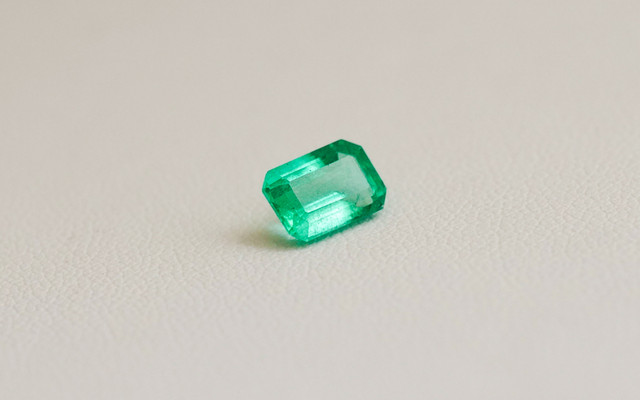What Does ‘AAA’ Really Mean?
Each jeweller has a different definition of what AAA grade quality means to them. We always recommend asking your jeweller how they define their quality.
A lot of jewellers will use the term ‘AAA’ or even AAAA grade’, without displaying real images of centre stones, which we believe isn’t transparent, as it does not give you an accurate depiction of what that centre stone will look like in real life.
Our Definition of ‘AAA’ Grade Quality:
AAA is defined as an emerald with excellent colour and transparency, and expertly cut to enhance its lustre and brilliance. Known for their unique inclusions, AAA grade emeralds will feature fewer naturally occurring inclusions categorising their clarity as ‘slightly included’ as compared to A or AA emeralds which are "Included" or "Heavily Included".
Judging The Colour of our Emeralds:
A high-quality emerald displays an intense and vibrant green colour with good saturation. Emeralds will vary from pure green, to bluish green and yellowish green hues based on their origin. While pure green hues are highly coveted, it is entirely personal preference.
Good clarity within the emerald will also impact the vibrancy and transparency of the overall colour.
To best showcase true colour and clarity, we only use real images of our emeralds online, meaning every single emerald image you see is taken in person, in natural lighting. We then use these real images to mock up our render in each ring design, unlike many jewellers who use a digitally created image (which is not an accurate representation of the emerald actually used in the ring).
Colour:
To be considered as AAA grade, we look for emeralds that are well saturated, featuring a rich, vivid green colour, where the hue is not too yellow or blue. Each emerald is handpicked for their excellent transparency, allowing light to pass through the gem, so that the tone is not too light, or too dark.
Clarity:

As a natural characteristic, all emeralds are included by nature. We select our emeralds with as few natural inclusions as possible, classifying them as ‘slightly included’. This helps to strike the perfect balance between a great quality emerald at a reasonable price.
These inclusions, also known as ‘jardin’ are what give emeralds their unique character.
In case a natural emerald has no inclusions, there is a high possibility that the emerald might not be natural and instead is lab grown. Alternatively a natural emerald with few to no inclusions would be priced 3x to 8x higher to reflect this near impeccable quality.
Cut:

The cut of an emerald refers to its shape, proportions, and faceting. A well-cut emerald enhances its colour and brilliance, while minimising the visibility of inclusions.
We look for emeralds where there is a balance between lustre, transparency and colour, and stay away from poorly cut gems which typically have ‘window’ defects in them. Windowing is where light falls through the gem rather than reflecting light back. For instance, if an emerald has a window you would be able to read text through the emerald.
Disclosing Treatments & Enhancements:
We believe it’s not only ethical, but the right of the consumer to know about any enhancements their emerald has undergone. At Nolan and Vada we carefully handpick emeralds that have been oiled to enhance clarity, in line for industry accepted standards.
Real Images Only:
For full transparency we only use actual images of each emerald with their stock identification, so you know exactly what you’re purchasing. Each image is taken in natural lighting to give the most accurate representation of the colour, clarity and cut. We also provide additional imagery and videos upon request.
We’ve noticed a lot of companies choose to show digitally created images and videos, where you can select your carat weight and colour. As every emerald is unique in it’s colour, saturation and inclusions, it is extremely important to see the exact emerald you are buying, rather than a digital render, as this would not be an accurate representation of the nuances of each stone. We strongly recommend that you do not trust a digital render, always ask to see real images in natural lighting to understand the true colour and quality of a natural emerald you intend to purchase.
